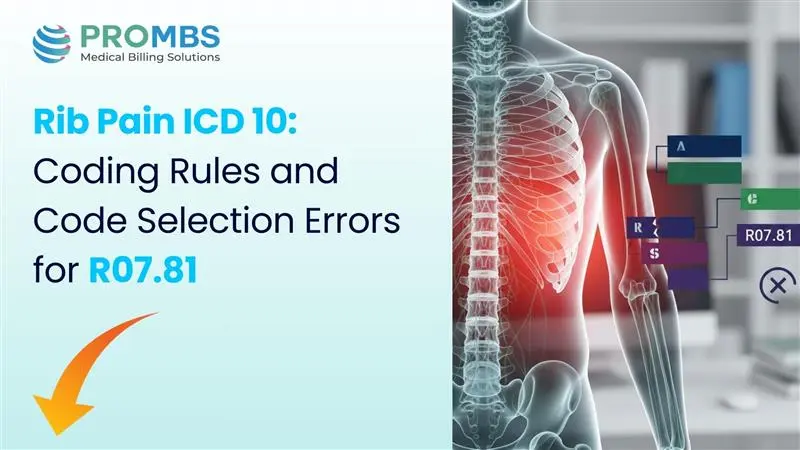According to National Institute of Diabetes and Digestive and Kidney Diseases (NIDDK) an estimated 97.6 million U.S. adults more than 1 in 3 have prediabetes, a condition characterized by elevated glucose levels that often precede a formal diagnosis of diabetes. These individuals frequently present with asymptomatic hyperglycemia that does not yet meet diagnostic criteria, making ICD10 code for hyperglycemia (R73.9, unspecified) an essential tool for early risk capture.
Used correctly, R73.9 supports medical necessity for lab follow-up, lifestyle intervention, and clinical monitoring even before a formal diagnosis of diabetes is reached. Without proper documentation, however, overuse or miscoding of this code can lead to audit risks, claim denials, and disrupted care management. Accurate lab values, clinical rationale, and a documented care plan are pivotal for compliant and effective use of the ICD10 code for hyperglycemia.
What You’ll Learn in This Guide
- What ICD10 code for hyperglycemia (R73.9) represents
- When and when not to use the hyperglycemia diagnosis code
- How to document elevated glucose accurately for coding and audits
- How hyperglycemia relates to chronic inflammation and metabolic risk
- The difference between R73.9 and related diabetes or screening codes
- Clinical and coding strategies for managing follow-up care.
What Is Hyperglycemia?
Hyperglycemia is defined as elevated blood glucose levels, typically above 125 mg/dL (fasting) or 200 mg/dL (random). While hyperglycemia can occur in individuals with diabetes, it can also be:
- Transient (e.g., related to stress, illness, or medications)
- Early-stage (before a formal diagnosis is established)
- Unspecified (when testing or diagnosis is pending)
Common causes include:
- Infection or acute illness
- Glucocorticoid use
- Poor dietary control
- Sedentary lifestyle
- Hormonal imbalances
Not all hyperglycemia is diabetes but it always warrants attention.
Understanding ICD-10 Code R73.9 for Hyperglycemia
ICD-10 Code R73.9 – Hyperglycemia, unspecified is used when a provider identifies elevated glucose levels but cannot yet assign a more specific diagnosis such as diabetes, prediabetes, or drug-induced hyperglycemia.
✅ When to Use R73.9:
- Elevated fasting glucose on labs (e.g., >125 mg/dL)
- Random glucose >200 mg/dL without clear diagnosis
- Transient or stress-induced hyperglycemia
- Incidental findings on labs without symptoms
- Pending diagnostic confirmation (A1C, glucose tolerance test)
⚠️ When Not to Use R73.9:
- When diabetes has been diagnosed → Use E11.9 or related
- For medication-induced elevations → Consider E13.9
- If prediabetes is confirmed → Use R73.03
- For routine screening with no known issue → Use Z13.1
Documentation Tips for ICD10 code for hyperglycemia (R73.9)
To code R73.9 correctly and avoid payer denials:
- Include lab values and dates (e.g., “Fasting glucose: 134 mg/dL on 3/12/2025”)
- Note whether the elevation is new, persistent, or transient
- Document clinical judgment (e.g., “Hyperglycemia likely secondary to corticosteroid therapy”)
- Clearly state the next steps (e.g., monitoring, endocrinology referral, A1C follow-up)
Why This Code Matters: Hyperglycemia and Inflammation
The ICD-10 code for hyperglycemia does more than document an elevated lab, it can signal deeper issues related to systemic inflammation and chronic disease risk.
Persistent high glucose contributes to:
- Oxidative stress and endothelial damage
- Immune system dysregulation
- Increased levels of CRP, IL-6, and TNF-alpha
- Metabolic syndrome and insulin resistance
These inflammatory responses collectively called metaflammation which are at the core of many chronic conditions. Early identification of hyperglycemia allows providers to intervene before the condition evolves into full-blown diabetes or vascular complications.
Why This Code Matters: Hyperglycemia and Inflammation
| Condition | Relevance to Hyperglycemia |
|---|---|
| Prediabetes | Early glucose dysregulation |
| Type 2 Diabetes (E11.x) | May follow persistent hyperglycemia |
| PCOS | Often linked with insulin resistance |
| Atherosclerosis & CVD | Glucose-induced vascular inflammation |
| Autoimmune conditions | Flare risk increases with poor glycemic control |
ICD-10 Code Comparisons: R73.9 vs. Other Glucose-Related Codes
| Code | Description | Use When... |
|---|---|---|
| R73.9 | Hyperglycemia, unspecified | Glucose elevated, diagnosis pending |
| R73.03 | Prediabetes | Labs confirm impaired glucose (A1C 5.7–6.4%) |
| E11.9 | Type 2 Diabetes w/o complications | Diabetes diagnosis is confirmed |
| E13.9 | Secondary diabetes (e.g., drug-induced) | Steroid or condition-induced diabetes |
| Z13.1 | Diabetes screening | No symptoms used for preventive screening |
R73.9 and Risk-Based Clinical Follow-Up
The use of R73.9 should not be passive. Instead, it should prompt:
✅ Repeat glucose or A1C testing
✅ Referral to primary care or endocrinology
✅ Lifestyle counseling (nutrition, exercise, weight loss)
✅ Monitoring of other risk markers (lipids, CRP, blood pressure)
Best Practice: If hyperglycemia persists across 2–3 visits, reassess for diagnostic criteria and update the code to reflect new findings (e.g., E11.9 or R73.03).
How Pro-MBS Supports Proper Use of ICD-10 Code R73.9
Pro-MBS ensures accurate assignment of ICD-10 code R73.9 (Hyperglycemia, unspecified) by aligning clinical documentation with coding guidelines and payer-specific rules. Our certified coders review glucose lab results, contextual provider notes, and differential assessments to validate medical necessity and reduce claim rework or denials. We assist in determining when R73.9 is appropriate as a provisional code and when escalation to a definitive diagnosis (e.g., R73.03 or E11.9) is warranted based on supporting data.
We also work closely with provider teams to implement coding workflows that track unresolved hyperglycemia across encounters. Pro-MBS integrates documentation audits, front-end alerts, and EHR prompts to prevent overuse of unspecified codes while maintaining compliance. This approach not only protects revenue integrity but also enhances care continuity through accurate capture of early metabolic risk indicators.



